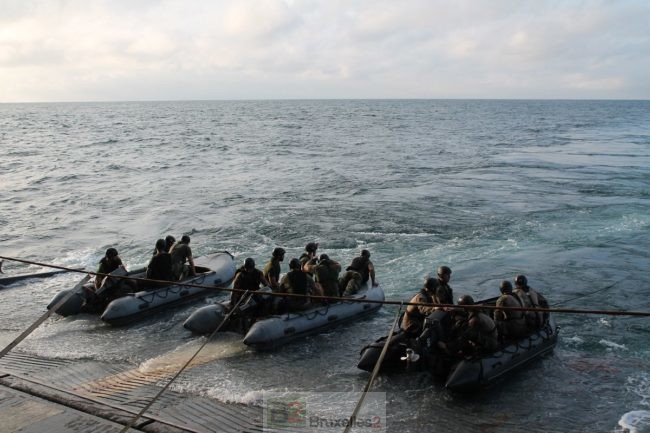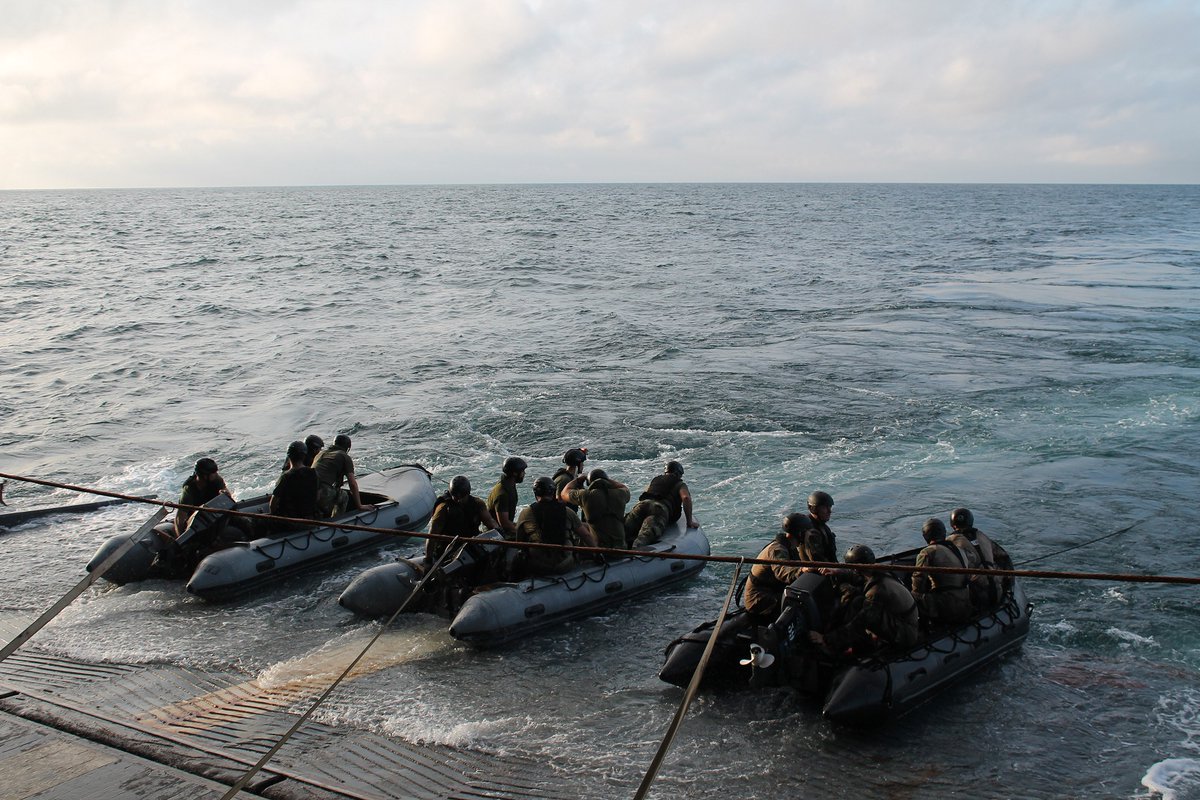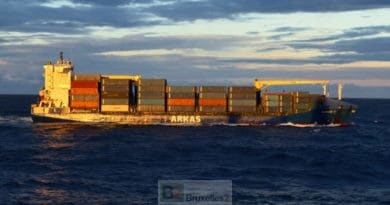What if the European army was a project for the future?
(B2) By dint of talking about it, of the European army, it would be necessary to examine what that would impose. Let's not try to say that this idea is good or bad. Let's try to see what that would entail. Imagine for a moment a political consensus to create this army. Let's imagine pragmatic ways to implement it.

Referring to the project of a "real (or real) European army", French President Emmanuel Macron on Europe1 last Friday (Faced with threats, Macron proposes a European army. An old or a young fantasy?) like German Chancellor Angela Merkel in front of the European Parliament on Tuesday (A (European) army would show the world that between (us) there would be no more war)) woke up an old project. None, however, was more specific in these speeches. Let's try to go further to draw the contours of this army.
What an army entails
An army supposes roughly a power (a political structure based on democratic legitimacy) and a legal basis, an organization (a political and military command) and a strategy. All this is concretely lacking today at European level. And we start from zero or almost (1). But this is not unattainable as long as we take into account what is possible and not what is desirable, that we stop talking and start working.
An army to replace or complement
Above all, it is necessary to define what is the object and the objective of this army: is it exclusively defensive of European territory? Or expeditionary, through participation in the external operations of the UN, EU or NATO, or even multilateral? Does it intervene in addition to the national armies or does it replace it? First entry or second entry?
An army with an assigned task or future tasks
Then, if we want this project to have some chance of succeeding, we must take advantage of past experience, not project unachievable tasks. If we create a 'standby' force, we find the disadvantage of the Eurocorps, the Franco-German brigade, the battle groups of the EU as of the NRF of NATO, of all these units present on paper for which it is then difficult to find an operational outlet because the original consensus has vanished.
- The operational tasks defined must be entrusted to this force as soon as it is created, even if it means assigning it other tasks later on.
The organization and the number of countries involved
It is also necessary to define the number of countries which would deliberately engage in such a structuring project for Europe, such as the format of this army: its size, its organization (number of brigades, divisions), its components (land , air, sea...), etc. Finally, it is necessary to specify the "cupola" organization of this army. Is it within the European Union, or within NATO or in a separate, autonomous structure?
Let's try to answer a few questions
If we look at the data of the moment – those succinctly indicated by Emmanuel Macron, by Angela Merkel and other European leaders –, this force should fulfill the most consensual, the most acceptable tasks. It is therefore not a question of assigning it an external peacekeeping task, which is often too closely linked to a history, a national external strategy, a national political organization (consultation of Parliament for example at each operation). But we can consider entrusting it with the defense of European territory or the protection of Europeans, in addition to a national force.
A force for the defense of the European territory ...
It would thus be a question of marking the occasion, of being present on the territory, of reassuring the countries of Eastern Europe, of being capable of not calling on the Americans all the time (2). This force could thus have as its first task that of ensuring the forward presence in the East facing Russia, or even coming to consolidate the borders in Northern or Southern Europe, at the request of a member country.
...and a European cyber-army
It could also perform a few functions such as the protection of Europeans in the event of a major risk (technological, natural or human), support for external or internal humanitarian operations, or the evacuation of Europeans residing in a foreign country becoming at risk. Finally, it could take on new fields of action such as 'cyber defence'.
- A European cyber-army would be a real asset both in terms of deterrence and as a driving force for this new force. Since cyber units are being created in several European countries, creating a common element would be easier because we do not automatically intervene in uses inherited from time.
The Franco-German driving force
Such an army could only be made by the alliance of two or three great countries. Doing so to 27 or 28 countries is tantamount to immediately condemning the project. If military logic leans towards a Franco-British alliance, this army will quickly come up against London politics. The political logic would incline towards a Franco-German army, complex to implement, more limited in its ambition, but which would have one virtue: to be more solid and more durable and to be complementary to the Euro Zone.
- This Franco-German alliance could be joined by countries that are more willing than others (Belgium, Denmark, Spain, Finland... but also Austria, Portugal, Czech Republic).
A limited size
Rather than defining large unattainable numbers (such as the 60.000 men fixed in Helsinki), an army cut to 5-6000 men, or 7-8 battalions (roughly a brigade), could be enough at first (aiming for a division level 10.000 men later). This size may seem minimal, but it seems sufficient in view of the various recent commitments. The French intervention force in the Sahel (Serval then Barkhane), the forward presence in Eastern Europe are of this size. This could be split into 4-5 land units, and 1 cyber unit, as well as an air component (transport support unit and helicopter unit) and a marine component. A small permanent central staff of around 2-300 people may be sufficient.
- It should be noted that certain elements foreshadow this 'European army', such as European Air Transport Command (EATC) which regulates transport aviation in half a dozen European countries, with a discretion that is just as remarkable as its results. Read : EATC: a model to follow
Organized in national bricks
This device of an army does not require merging all the corps down to the lowest level (section or company). Nothing prohibits having a national functioning up to the level of the battalion for example, and having a multilateral functioning above for the command.
- This thus makes it possible not to have everything to resolve, the questions of internal organization, discipline, uniforms, harmonization of salaries and bonuses remaining regulated by national rules.
A half-permanent, half-rotating system
In order to be more efficient, the battalions provided to this European army could be organized on a mono-national or bi-national basis (for countries accustomed to working together). They could be made available on a fixed basis or, in the form of periodic on-call duty, on a rotating basis. But, to be effective, this rotation should not be all-out, it should concern the same units.
- Their use could be sufficiently flexible and modular according to the needs, so as not to fall into the previous throes (seeing a force condemned to remain present).
An autonomous organization
This force would not be under the control of one of the existing structures (NATO, EU), but could fulfill tasks that these have defined, or accepted (on the latter's initiative). The political command structure should remain separate from the two security structures (NATO and EU). But this army will be able to respond to missions decided by one or other of these institutions. If ideally, a headquarters could be located autonomously or within the European Union. But from a point of view acceptable to the Germans (like the British or any other country), it could be located within the NATO Shape in Mons. This would have the advantage of preserving interoperability with NATO personnel.
- One of the options could be to take as the hard core of this staff the Eurocorps based in Strasbourg and largely underemployed until now. The idea of strengthening the EU military staff is a delicate option since it requires unanimity and comes up against clear hostility. Read : Improving the MPCC compromise
An independent budget
Its budget will be an important notion. If we want to avoid the failure or the abyss of technocratic discussions on the charges, we must plan from the outset for a significant common budget, making it possible to finance the command structure, functioning, operations, intra-European travel or outside Europe, or even hardship premiums.
A new legal framework
In any case, a new treaty will be needed to define this set of rules (3). A Treaty which will not only have to be drafted and signed, but also ratified by the parliaments of the various countries concerned. A point that it is better to think about seriously, to avoid finding yourself in the situation of several European treaties (EDC, European Constitution, etc.) which were too ambitious or had 'drift' in relation to the acceptable objective, and ended up to be rejected.
Ideas to work on
All of this... these are just a few ideas thrown down on a piece of paper. One can imagine other solutions. And there are still a whole series of questions to be resolved (notably the chain of command). They illustrate both the difficulty and magnitude of the task, but also that this project is within reach. It is simply necessary to have the political will, simultaneous, and shared and not only the desire to make a good word, just good to make talk in the cottages and giggle with laughter all those who consider that the European project is outdated.
- We must not sink into 'desirable' projects but start from existing difficulties, to set up a 'reasonable' project in the near future (2024-2025). Or else, keep quiet, and stop talking about a European army...
(Nicolas Gros-Verheyde)
- Read our analysis: What Defense Europe is. What she is not
- If Donald Trump serves a second term (which is not excluded), this gives the American leader until 2024 to reshape his foreign policy. As for Russia, if a 'softer' inflection is always possible, we do not see why Vladimir Putin would stop a policy of Russian reintroduction into the world curriculum, when he is on the way to garnering notable points.
- Of course there is a possibility, existing within the EU Treaty, of moving to a common defense policy. But that does not automatically mean a European army (although that underlies it enormously in the minds of its designers). And, above all, it requires a consensus decision with all Member States. As much to say that it is necessary to forget.

